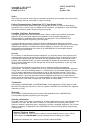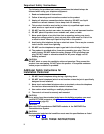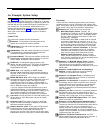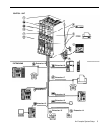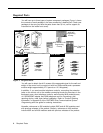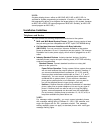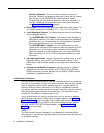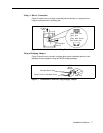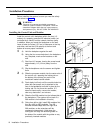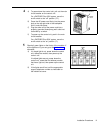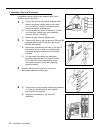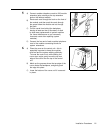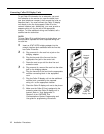
NOTE:
A system display phone—either an MLS-34D, MLS-18D, or MLS-12D—is
required for system programming at extension 10 and/or 11. (Make sure that
the programming phone is as large as the largest phone in the system, because
an MLS-12D or MLS-18D cannot program an MLS-34D. Similarly, an MLS-12D
cannot program an MLS-18D.)
Installation Guidelines
Telephones and Devices
You can connect the following telephones and devices to the system:
■
■
■
MLS- and MLC-Model System Phones. System phones require at least
two-pair wiring and are compatible with AT&T 4-pair SYSTIMAX® wiring.
Call Assistant Intercom Autodialers with Busy Indication
(MLS-CA24). You can connect an Intercom Autodialer to the system
phone at extensions 10 and 11 (maximum two per system). The Intercom
Autodialer has its own power supply, which must be plugged into an AC
outlet.
Industry-Standard Devices. Industry-standard devices (including
standard phones) require one-pair mounting cords; AT&T D2R mounting
cords are recommended.
-
Standard Phones. Connect standard touch-tone or rotary dial
phones to the system for:
-
Power Failure Operation. During a power failure, system phones
will not work because they require power to operate. However, if
you connect standard phones to extensions 10, 16, 22, and 28,
users can place and answer outside calls on lines 1, 3, 5, and 7,
respectively. You can connect a standard phone either alone or
combined with a system phone. (If you combine a standard
phone and a system phone on one extension, you may want to
turn off the standard phone’s ringer during normal use.)
-
Hotlines. A hotline extension should be connected to a standard
phone, rather than a system telephone, but can ring any type of
phone. A hotline phone can also be set up to ring the paging
system, so announcements can be made over the loudspeaker.
Do not connect a Hotline phone to extension 10, 16, 22, or 28, to
keep them available for power failure use.
NOTE:
For message waiting capability, you must connect standard phones
with message waiting lights to Release 3.1 (R3.1) 206 modules, and
equip the system with an R3.1 processor module. This message
waiting capability does not apply to standard phones with neon-type
message waiting lights.
Installation Guidelines
5




